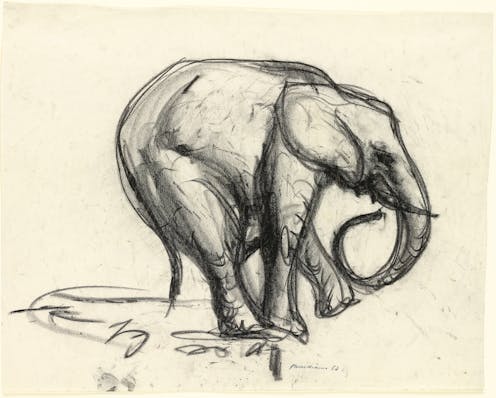
Review: Fred Williams: The London Drawings, The Ian Potter Centre: NGV Australia
When Fred Williams died on April 22 1982, aged 55, Australia lost one of its most significant landscape artists of the second half of the 20th century. Williams reinterpreted the landscape within a modernist framework and taught Australians a new way of seeing their natural environment.
Williams had studied art in Melbourne at the National Gallery School and took classes in George Bell’s more progressive private school. He subsequently spent almost five years in London studying drawing at the School of Art at the Chelsea Polytechnic and took an etching course at the Central School of Arts and Crafts.
He returned to Australia late in 1956. It was then he announced that he would paint the gumtree.
This exhibition of 160 drawings, 12 gouaches and 30 etchings examines Williams’s work before he turned to the gumtree – his figurative work during his London years where he examined the human figure, animals in the zoo and the rich cross-section of theatre life and of life on the streets.
Many of these drawings have never been seen before and are part of a generous gift made to the National Gallery of Victoria by the artist’s widow, Lyn Williams, and family.
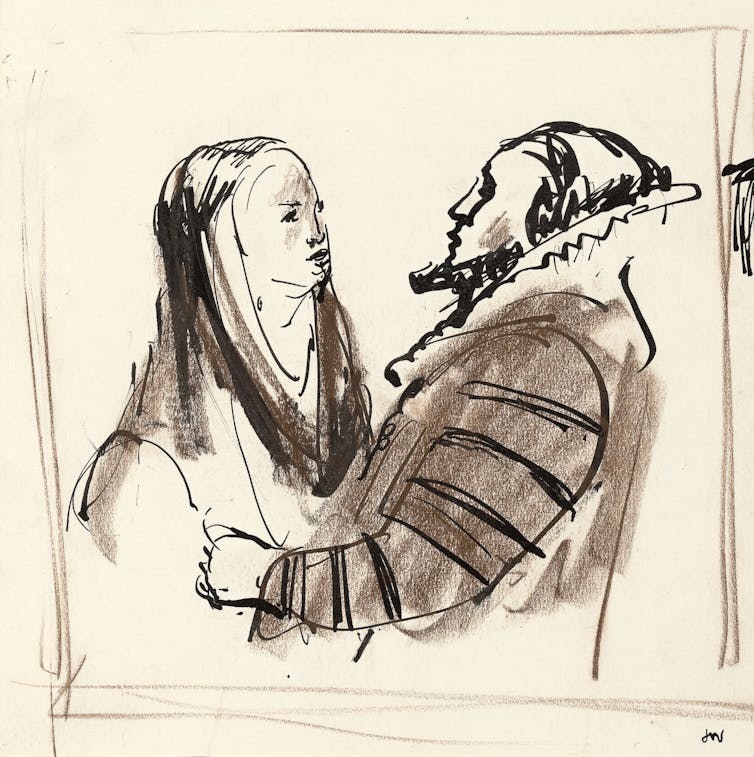
Read more: Fred Williams in the You Yangs: a turning point for Australian art
Quickfire sketches
Fred Williams: The London Drawings shows Williams as few have seen him before, with rapid sketches of models posing at the art school, glimpses of comic scenes on the music hall stages the artist caught from his dimly lit perch in the gods, and faces that he encountered in the street.
He seems to have taken great pleasure in sketching elephants and the big cats in the zoo, as well as images of people at the framing business where he worked, portraits of friends and rural scenes from his occasional trips into the English countryside.
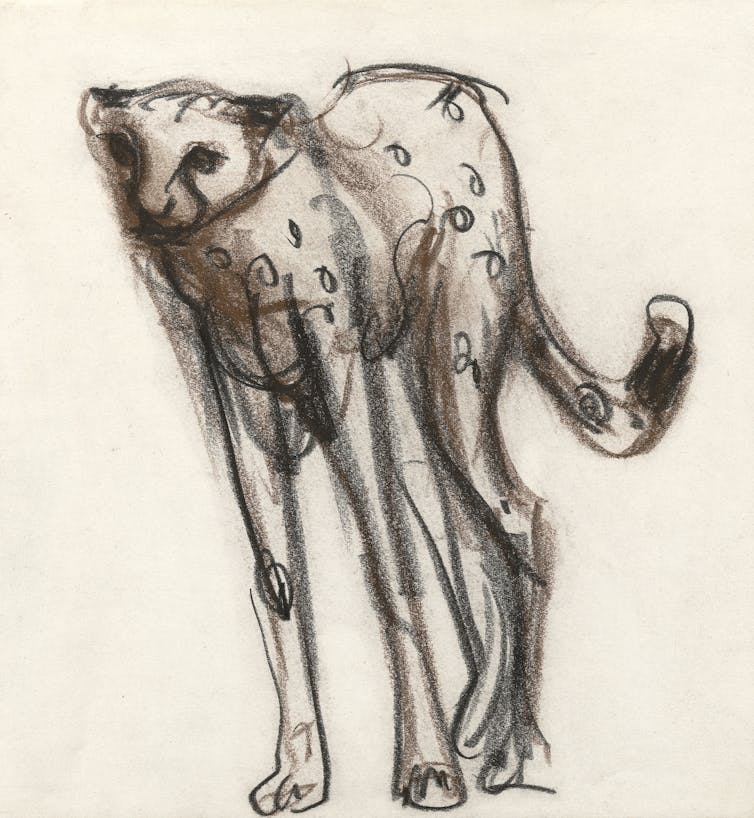
What is fascinating is not so much the subject matter that caught the attention of this artist in his 20s, but his manner of execution.
Williams, the landscape artist, was certainly an impulsive worker with his idiosyncratic dabs, blobs and dribbles punctuating the surfaces of the canvases, gouaches and etchings.
In the London drawings, Williams appears to be assembling this repertoire of marks with the curious quickfire sketches of random profiles, tumbling arrested action and spectacular and unexpected compositional arrangements.
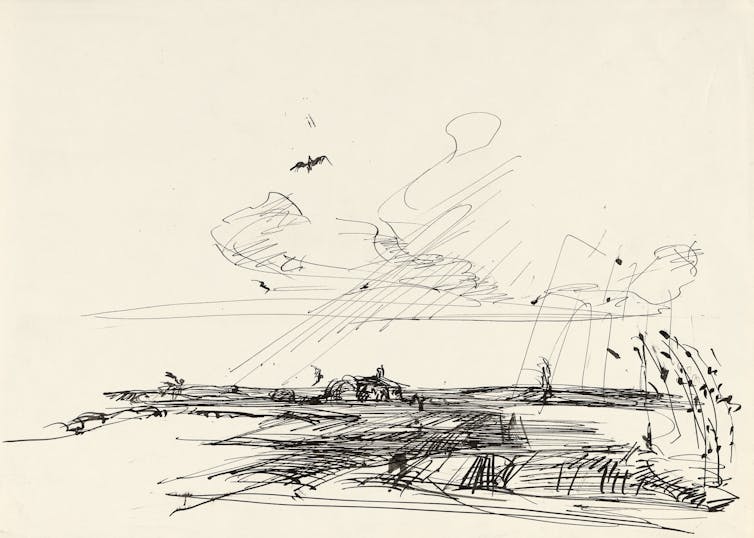
Throughout many of the drawings, the desire is to achieve a maximum expressiveness, where his line flirts with caricature, not so much to achieve comic intent but to capture a memorable gesture. The exhibition is studded with little pockets of explosive expressive energy.
A solitary and unconventional artist
Williams frequently worked alongside other Australian artists then resident in London, for example, Francis Lymburner with whom he drew at the zoo.
Lymburner was a virtuoso draughtsman. His animal sketches wonderfully convey the wholeness of the creature depicted with an exquisite lucidity of line.
Williams, working next to him, appears not interested in articulating a rhinoceros, elephant, giraffe or lion, but sets out to capture their expressive essence. The viewer is swept along by the power of the drawing – the emotional impact – and not by the articulation of its overall form.

Subsequently, Williams was to employ a similar strategy to the Australian landscape when he returned. In the early Nattai River landscapes and the first Mittagong series in 1957-58, apart from restructuring the picture plane and titling forward the surface, the expressive vibrancy of the images stems from the expressive expressionistic mark making.
Williams was an unusual and outstanding draughtsman who was obsessive, inventive and enthused by what he discovered in London. Apart from the community of expats that surrounded and to some extent supported him, he was also a solitary and unconventional artist.
From the evidence presented in this extensive exhibition, Williams was not swept along by fashionable trends that inspired the British art world. The artists who appear to have most inspired him at this time were Rembrandt, Daumier, Whistler, Degas and some of the Renaissance masters.
Complete dedication
From the outset, Williams exhibited a complete dedication to his art and a very measured approach.
He did suffer bouts of melancholy, common to many young artists, but for him art was a process that was not to be hurried. He was prepared to spend a dozen years training in art schools in Melbourne and London before launching on a solo career.
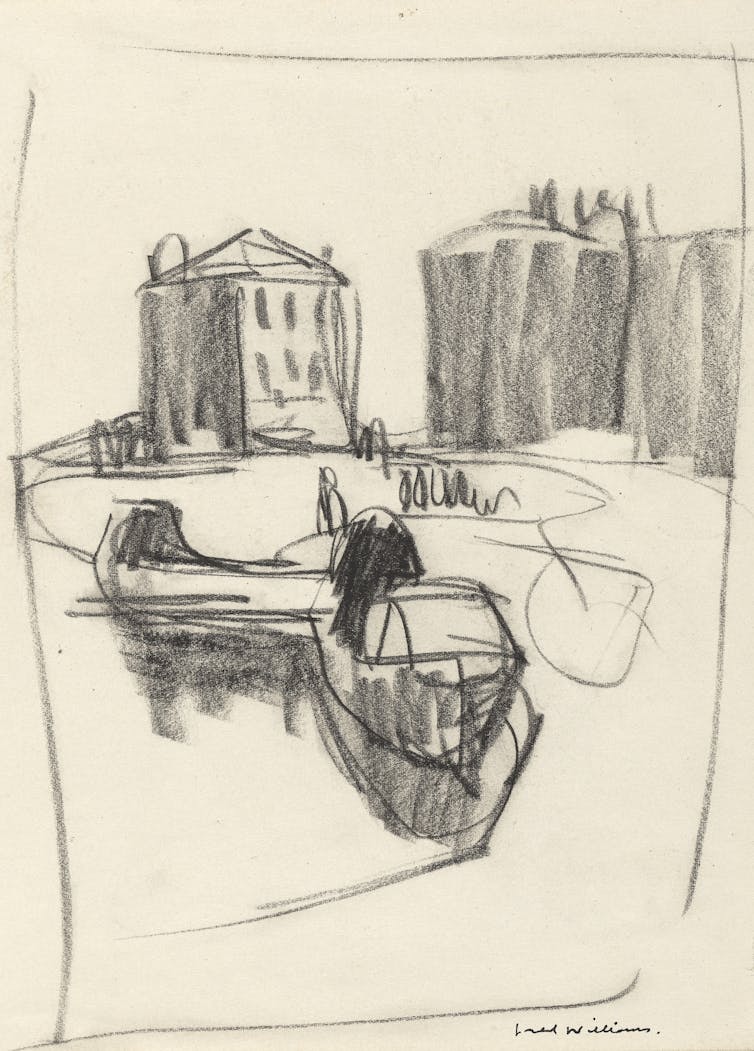
The London drawings were an apprenticeship, a training that was to set him up for the challenges that he was to face on his return to Australia. One inevitably wants to speculate whether Williams could have been something more than a landscape painter.
In my discussions with the artist in the final years of his life, it appeared to me that Williams felt that he had mastered the landscape and was ready to return to the grand human narrative. Death ultimately robbed him of that opportunity.
Fred Williams: The London Drawings is at The Ian Potter Centre: NGV Australia until January 29.
Read more: Not all blackened landscapes are bad. We must learn to love the right kind
Sasha Grishin does not work for, consult, own shares in or receive funding from any company or organisation that would benefit from this article, and has disclosed no relevant affiliations beyond their academic appointment.
This article was originally published on The Conversation. Read the original article.







